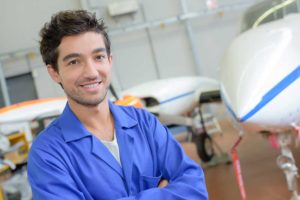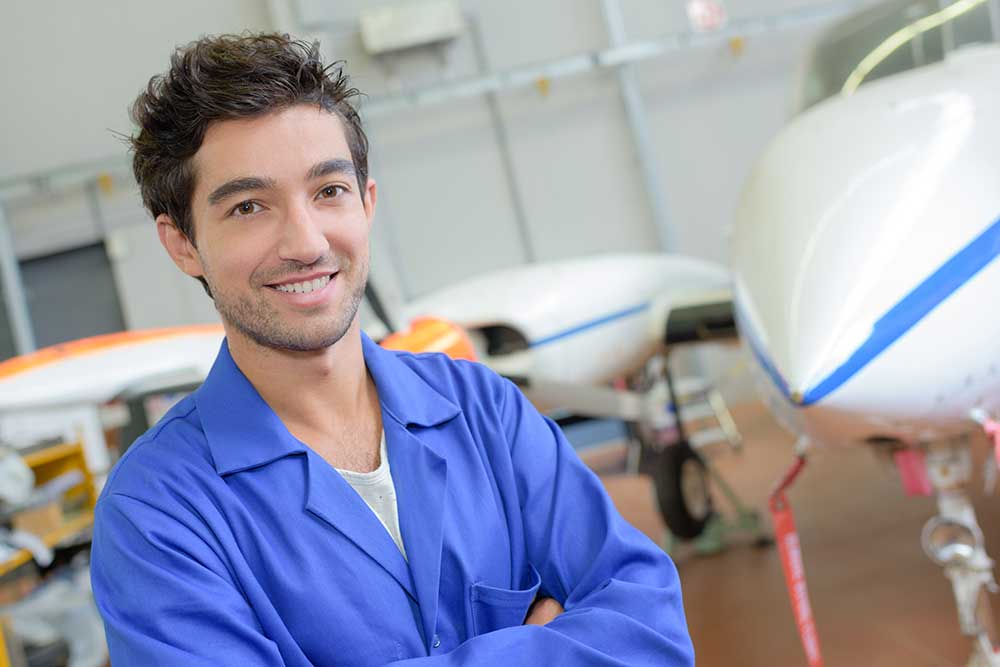Disclaimer: The information on our website is provided for general information purposes only. We make no representations or warranties of any kind, express or implied, about the completeness, accuracy, reliability, suitability or availability with respect to the website or the information contained on our website for any purpose. Any reliance on such information is therefore strictly at your own risk and we are not liable for any damages or losses arising out of or resulting from your reliance on any information contained on our website.
An aerospace engineer technician tests spacecraft, missiles, and aircraft to ensure they meet compliance requirements. The importance of reliable parts and equipment is critical. They frequently use simulation tools along with computer-based modeling and processes to maintain and operate equipment. They are typically employed in laboratories, manufacturing, offices, or industrial plants.
Watch a video to learn what an aerospace engineer technician does:
How to Become an Aerospace Engineer Technician
Typically, aerospace engineer technicians hold an associate’s degree in engineering technology from a community college. Alternately, they may also earn a certificate from a vocational technical school. Coursework may include drafting, computer skills, algebra, basic science, or trigonometry. But, did you know that some community colleges offer internships or cooperative education partnerships with engineering companies? This allows students to gain experience while earning their degree.
Many employers require a security clearance for projects related to national defense, therefore a U.S. citizenship may also be required. However, NASA’s Careers in Aerospace Technology page recommends that high school students interested in this career field should begin taking classes in algebra, biology, calculus, chemistry, computer mathematics, English, geometry, math analysis, physics, and trigonometry.
Job Description of an Aerospace Engineer Technician

An aerospace engineer tech prevents the failure of spacecraft, missiles, and aircraft by maintaining and operating equipment used in testing these designs. In addition, they are often required to operate and program computer simulations to perform the tests. Though aerospace engineer technicians frequently calibrate test equipment and troubleshoot problems, they also work closely with aerospace engineers to ensure proper builds and safety of the designs.
Aerospace engineer technicians record data from assemblies, test parts, and monitors quality control with systems that is installed into the aircraft, spacecraft, or missile. Also, it is becoming more common for aerospace engineer technicians to specialize in 3D printing or additive manufacturing. Finally, these techs need skills in math, communication, mechanical, and critical thinking. In addition, they should also have interpersonal skills and be detail-oriented. Finally, this job can pose health hazards if someone is exposed to toxic materials or dangerous equipment. However, when proper safety precautions are taken these incidents are low.
Free Student and Teacher Resources
The American Institute of Aeronautics and Astronautics (link opens in a new tab) is a society dedicated to the global aerospace profession that hosts videos and read news related to aerospace. Also, Delft University of Technology (TU Delft) offers a free Introduction to Aeronautical Engineering course on EdX.org with the option to pay a small fee to receive a verified certificate upon completion of the course. By taking this course, you’ll learn:
- The impact of the history of flight on aircraft today.
- How the earth’s atmosphere can be modeled and how we can use this for aircraft design.
- Stability, structures, navigation and propulsion of aircraft.
- The fundamental aerodynamic concepts for flying an aircraft.
- How airfoils and wings generate lift.
- Flight mechanics of aircraft.
- How aircraft can optimally climb, descend and cruise.
Aerospace Engineer Career Video Transcript
Seen from the ground, the flight of a jumbo jet or the launching of a space shuttle can seem like magic. For the aerospace engineering and operations technicians who work on these modern marvels up close, these events are part of their everyday jobs. These technicians help ensure that aerospace engineers’ experimental designs for air and space vehicles are feasible and can be implemented.
Aerospace engineering and operations technicians build test facilities, then run tests on prototypes or new models to find problems in design or function. They record test data and make adjustments to prevent dangerous equipment failures. Making live tests function as intended requires both communication skills and technical skills. Often when something isn’t working, technicians and engineers troubleshoot together, so technicians must know how to ask the questions that will lead to the right answers.
Most aerospace engineering and operations technicians work full time in manufacturing plants, laboratories, and offices. In plants, technicians are directly involved in assembling aircraft, missiles, and spacecraft. Aerospace engineering and operations technicians typically earn an associate’s degree in engineering technology. Security clearance may be required for work related to national defense. Proper execution of their duties is crucial both for safety and performance. In the end, it’s these technicians who carry the weight of flight.
Article Citations
- Bureau of Labor Statistics, U.S. Department of Labor, Occupational Outlook Handbook, Aerospace Engineering and Operations Technicians.
- National Center for O*NET Development. 17-3021.00. O*NET OnLine.
- The video is Public Domain from the U. S. Department of Labor, Employment and Training Administration.

